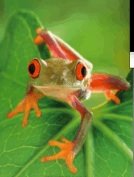Discovery Questions:
1. Name and describe the physical and biolocial components of another reef ecosystem around the world? For one point extra, turn in an ecosystem map of a coral reef habitat.
2. What human activites do scientists contribute to the decline of coral reefs?
3. Why are sharks considered keystone species of many reefs, according to the article?
4. How do environmental scientists monitor the health of coral reefs?
5. What are the economic complexities around the establishment of a marine reserve, as explained in the article and your research?
6. What is the role of the Endangered Species Act and conservation organisations in preserving our oceans?
Resources:
Our Imperiled Oceans -
http://www.smithsonianmag.com/science-nature/victory-at-sea.html
Ecosystem Assessment Division of NOAA -http://www.nmfs.noaa.gov/habitat/ead/EADhome.htm
Reefs at Risk, World Resource Institute -
http://www.wri.org/project/coral-reefs
Conservation International -
http://www.conservation.org/Pages/default.aspx
Endangered Species Act -
http://www.nmfs.noaa.gov/pr/laws/esa/





